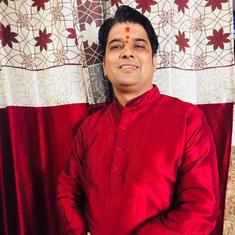While compiling the list of India’s youngest debutants in Test cricket ahead of Prithvi Shaw’s impending debut, a couple of things stood out. Before the first Test between India and West Indies, the highest individual score for an Indian teenager on debut was 36 by CS Nayudu way back in 1934. Twenty nine cricketers had made their debut for India before turning 20 and none of them had made a half century in their first match — not even destiny’s favourite child, Sachin Tendulkar.
It also felt like the stage was set for Shaw to break a few of these records. In January 2017, at this very venue, he scored a century on his Ranji Trophy debut for Mumbai. Later that year, he scored a century in his Duleep Trophy debut as well.
So, on Thursday against the West Indies, when he went on to become the youngest Indian cricketer to score, first, a half-century and then, a century — there was a sense of inevitability about it. On his first day as a senior international cricketer, the 18-year-old lived up to the expectations that were placed on him.
Fearlessness
Those who have watched Shaw bat in domestic and U19 cricket will not have been surprised by the way he started off his innings. As the first sign of his confidence, he walked out and faced the first ball of the match instead of settling down at the non-striker’s end. The shot that he played to get off the mark was a signature one too — high back-lift that comes down in an arc reminiscent of Brian Lara’s, fast hands, reading the length quickly and punching through cover for three runs.
From there on, he kept getting better. Despite losing his senior opening partner KL Rahul in the first over, Shaw didn’t get bogged down by the situation. He backed himself to put the bad balls away from the word go and stuck to his natural game. The pitch was playing true, the depleted Windies bowling attack (without Jason Holder) wasn’t offering much in terms of threat in the October heat and Shaw made the most of it.
As a statistic showed, off the first 16 balls he faced, he didn’t play a single defensive stroke. He either left the balls alone or looked to score runs. That trend continued for most of his innings as he cut, drove and flicked fearlessly.
It’s normal to think he wasn’t being challenged by the skills of the opposition but playing one’s natural game in the very first knock at the highest level is easier said than done.
Lovely to see such an attacking knock in your first innings, @prithvishaw! Continue batting fearlessly. #INDvWI pic.twitter.com/IIM2IifRAd
— Sachin Tendulkar (@sachin_rt) October 4, 2018
Technique tweak
While we have come to expect that fearlessness from Shaw, the most heartening aspect was the few evident technical corrections he has made in his game. During the Under-19 World Cup, for instance, Ian Bishop had observed how his back foot was moving beyond the leg stump as part of his initial trigger movement, instead of moving towards middle and off. While this enabled him to cut with more power as he made himself room, his driving was at times circumspect.
Against West Indies, however, that trigger movement was not to be seen. He is still not moving his back leg towards the off stump, but it’s much more straighter now. As a result, when he played a cover drive or a square drive off the front foot, he was not playing too far away from the body, with his left leg not locked down.
His back-foot game, already one of his strong points, seemed to have improved as well as his punches hardly seemed forced. Sanjay Manjrekar, who’s dissecting of batting technique is often top-notch, spoke about how Shaw was middling the ball almost every single time and the full face of the bat was presented even when playing square of the wicket.
There have been question marks raised in the past whether Shaw’s technique would stand the rigours of Test cricket. While a century against this West Indies attack on a pitch that was a dream to bat on (Rahul must be kicking himself, eh?) does not quite answer it emphatically, Shaw has showed he has the desire to improve his game.
Conversion
Arguably helped by the time he has spent with Rahul Dravid, who has been a firm advocate of fast-tracking Shaw, it was not just the technical tweaks that stood out in Shaw’s game in Rajkot. At the highest level, the mental aspect is often the difference between a promising talent completing the step up or remaining unfulfilled. And by displaying the maturity to convert a good start into a century, Shaw also showed he has a good head on those young shoulders.
On his way to his hundred, Shaw attacked 55% of the balls he faced. Since reaching the milestone, that figure has dropped to 41%. #IndvWI
— The Cricket Prof. (@CricProf) October 4, 2018
One of the less-obvious highlights of Shaw’s innings was how he reset himself after reaching the 100. Without going into a shell, he played the most number of defensive strokes in his innings in the 20-ball period following his landmark.
Far too often we see players losing their head in the moment after reaching a milestone, and perish trying to shift gears. M Vijay and KL Rahul have both shown that tendency, to name a few examples, in the recent past. While Shaw didn’t quite convert his century into a big one, his priorities were in order. And as evidenced by the disappointment in his face after getting out in the last over before tea to a soft dismissal, this is a young guy with the hunger for big runs.
Tougher challenges await Shaw, but in his first Test, he passed in flying colours.










